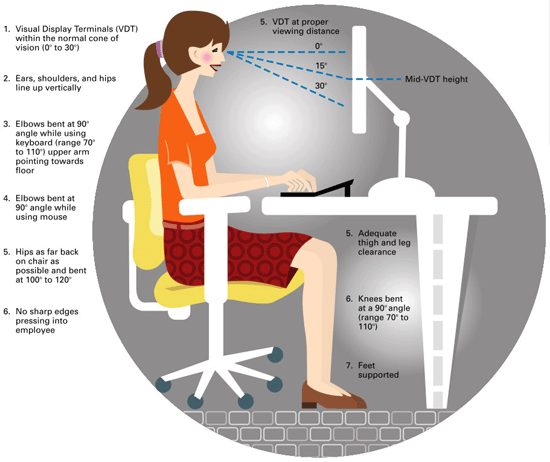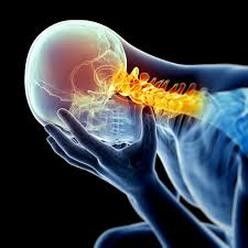
 |
 |

The following assessment is to be used to ensure workstations are ergonomically designed. A “NO” answer to any of the following questions identifies an issue that may contribute to an ergonomic risk.
| CHAIR | YES | NO | N/A |
| Is your office chair supportive and comfortable throughout the day? |
|
|
|
| Can you adjust your chair so the lumbar support fits snugly in the small of your back so that you feel comfortable and supported without any pressure points? |
|
|
|
| When chair height is adjusted appropriately, your elbows are in line with your keyboard. |
|
|
|
| If your feet are not positioned on the ground, a foot rest is required. |
|
|
|
| Set aback angle is adjusted so user is in an upright position when using the keyboard. |
|
|
|
| KEYBOARD | YES | NO | N/A |
| Directly in front of you? |
|
|
|
| Placed so your upper arms are close to your body? |
|
|
|
| Can you maintain a natural and straight posture to your hands, wrists and forearms? |
|
|
|
| Separate keyboard, monitor and mouse is used, if using laptop for extended periods of time? |
|
|
|
| MOUSE | YES | NO | N/A |
| Can the mouse be places close to you and within your optimum reach zone? |
|
|
|
| Is it placed just beside the keyboard and at the same height? |
|
|
|
| Can you place your finger, wrists and forearms all in a straight line whiles using the mouse? |
|
|
|
| MONITOR | YES | NO | N/A |
| Is the monitor far enough away, i.e. you do feel the monitor is to close (generally no further than arm’s length away, 500-750 mm). |
|
|
|
| Are you able to look straight ahead at the monitor without twisting? |
|
|
|
| Is the top of your monitor at eye height? |
|
|
|
| Can the position and contrast of the screen be adjusted? |
|
|
|
